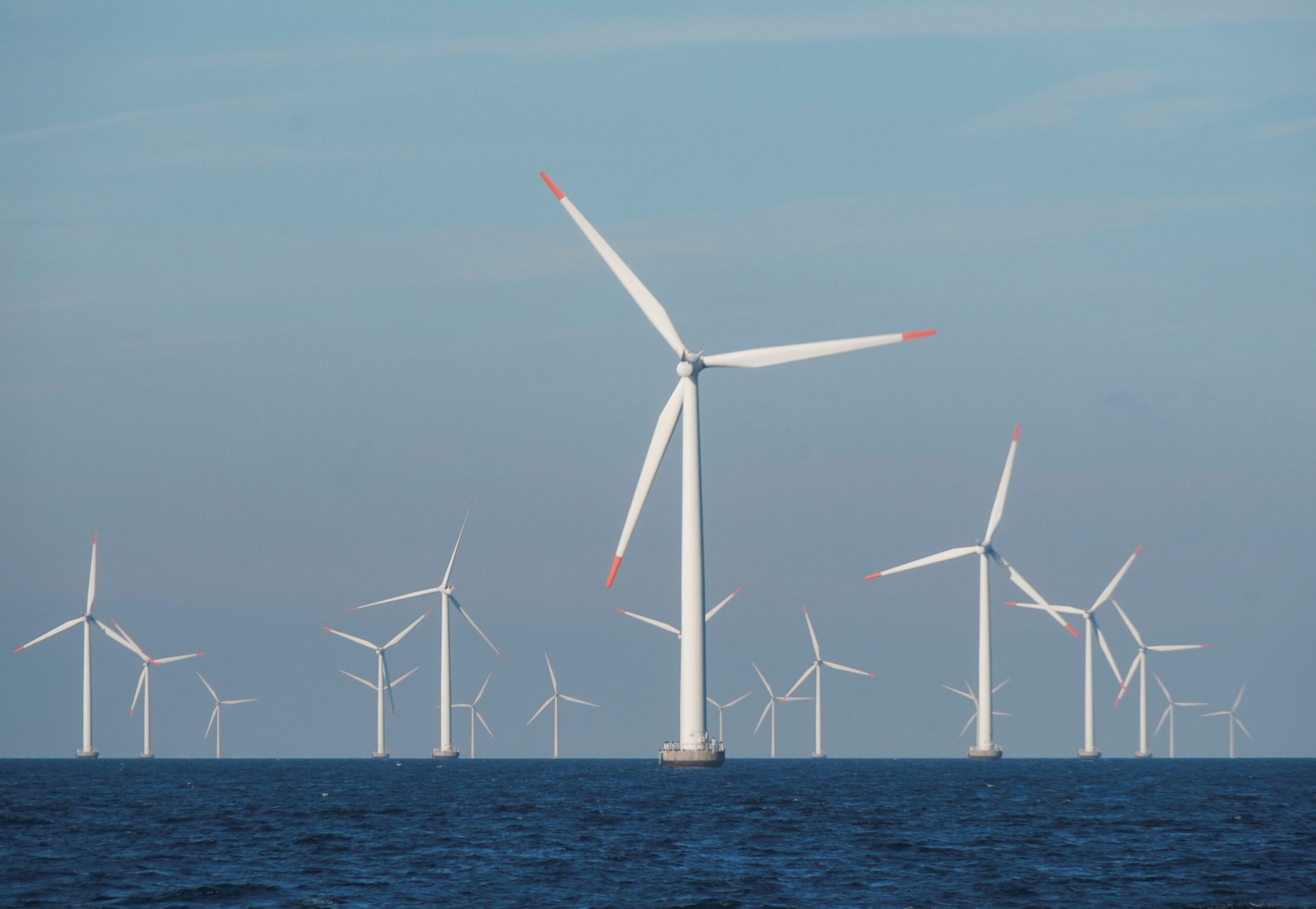By Josh Saul and William Mathis (Bloomberg) —
Offshore wind farm developers are finding one more thing in common with the fossil fuel industry: community backlash on both sides of the Atlantic.
Much like the resistance to fracking in parts of the U.S. and the U.K., oceanfront towns have fought against power lines running ashore from wind farms, even as the massive turbines themselves are mostly out of sight. In a dramatic move Thursday, New Jersey’s Democratic Governor Phil Murphy signed legislation that strips coastal communities of the right to block buried power lines for projects like Orsted A/S’s Ocean Wind 1 off the state’s coast.
The willingness to squash local opposition highlights one of the dilemmas faced by nations that are aggressively pushing to fight climate change: How to build big clean-power projects quickly when dealing with not-in-my-backyard sentiment. Denmark’s Orsted has repeatedly come across backlash against its wind farms, as have General Electric Co., France’s Alstom SA, Spain’s Iberdrola SA and Sweden’s Vattenfall AB.
“We’re not going to let NIMBYism shut this down,” said state Senator Stephen Sweeney, a sponsor of the legislation and New Jersey’s highest-ranking lawmaker. He added that some residents of Ocean City, a hotbed of opposition in the state, told him they could kill offshore wind. “Ocean City doesn’t get to make the decision for the entire state of New Jersey on a policy initiative. They just don’t.”
Orsted, the world’s biggest developer of offshore wind power, plans to build the Ocean Wind 1 project between 15 and 27 miles off Atlantic City and connect it to the electrical grid through buried power lines in both Ocean City and Island Beach State Park.
“The majority of the people are against the wind mills,” said Ocean City councilman Keith Hartzell. “Everybody thought it would be up to us to decide whether the transmission lines came through Ocean City.”
Orsted was forced to abandon plans to build an interconnection facility for its Skipjack Wind Farm in a Delaware state park last year after local mayors and town councils protested, and it still doesn’t have a site for the facility.
Orsted representative Gabriel Martinez said that connecting offshore wind farms to local electric grids can be a sensitive topic for some residents, so the company works with local communities and regulators to share information and address concerns. “Sometimes that process has extended our project timeline, but these are important dialogues to have in a new industry,” he said.
The onshore infrastructure needed for offshore wind projects consists mostly of buried cables and interconnection facilities that are set back from beaches. Local opposition to that infrastructure often centers around the disruption caused by construction or by general resistance to the entire project.
Local residents in the well-off Hamptons town of Wainscott, New York, have targeted another Orsted development called South Fork Wind, filing a lawsuit in February against the project and the town board over a high-voltage cable that would land at the town beach and then run underneath town streets to a new substation. And the Block Island Wind Farm off the coast of Rhode Island, developed by General Electric Co. and Alstom SA, also faced opposition because of power cables running through the town of Narragansett.
Offshore wind developers have faced similar hurdles in the U.K. A judge overturned approval for Vattenfall’s 1.8-gigawatt Norfolk Vanguard wind farm, about 31 miles off the coast of England, saying the British government didn’t properly consider the visual impact of the project’s transmission equipment on the area where it will be built.
A community group called Suffolk Energy Action Solutions is currently campaigning against a plan by a unit of Iberdrola, one of the world’s biggest utilities, to build transmission lines and an electrical substation in the rural area.
Members of the group are banding together with other coastal communities to present a united front against the onshore transmission structures. One of the founders of the Suffolk group, Glynis Robertson, said the residents are in favor of the growth of renewable power projects off the coast, but opposes the impact in her seaside neighborhood.
“They’re going to trash the whole of East Anglia,” Robertson said by phone. “We’re happy for the offshore section to be consented. Go ahead, build it, but we don’t want it on this particular kind of land.”
The slow death of Cape Wind, a wind farm planned for five miles off Cape Cod that drew the ire of the Kennedy and Koch families, taught wind developers that projects needed to be much fartheroffshore to avoid local opposition. But recent fights from New York to Norfolk show that even out-of-sight turbines can rouse local residents against a project.
“It overrides any ability we have to protect our property,” said Michael DeVlieger, another Ocean City councilman. He said his constituents are worried about the disruption to their town, the potential use of eminent domain and even whether the power lines could affect their health. “I’ve got a guy with a pacemaker on 34th street who’s scared to death they’re going to put this thing in.”
–With assistance from Elise Young.
© 2021 Bloomberg L.P.

 Join The Club
Join The Club











